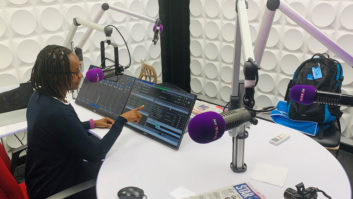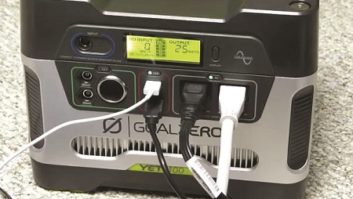This is Part 2 of a series about IT fundamentals that began in the Aug. 17 issue. (Read Part 1.) These articles are based on excerpts from the Society of Broadcast Engineers CBNT/CBNE Study Topics webinar series, designed to assist those seeking SBE certification and to provide others a broad overview of IT as used in broadcast engineering.

The Ethernet switch is one of the most important equipment purchase decisions the broadcast IT engineer will make.
Ethernet switches can be found for little as $10.99 on Amazon (Tenda SG105) to models that might cost just shy of $10,000 (Cisco Catalyst C930L).
Often called simply the network switch, the Ethernet switch, deployed correctly, can enhance network performance by providing contention-free host connectivity to the network, isolating hosts from each other, decreasing network errors and increasing overall network security.
What it does
Regardless of price and features, the layer 2 switch performs three basic functions: address learning, frame filtering and transparent frame forwarding.
The switch learns what host device is connected to a switch port by reading the source MAC address when a frame is received. The source MAC address is placed in an internal memory table with the associated port number. The memory table can vary in size depending upon the switch model and is referred to as the MAC address table or Content Addressable Memory (CAM) table.
Entries in the table remain for a limited time before they are deleted and must be relearned. Five minutes is a common default aging time for most switch manufactures.
The switch filters frames by looking up the incoming frame destination MAC address in the memory table. If the MAC address is found, the frame is forwarded only to the associated switch port in a transparent manner, by not changing the payload data contained within the frame. The switch becomes transparent in the overall network view. If the frame is not found, the frame is forwarded to all ports except the incoming port. When the host responds, the source MAC address is captured and added to be table.
Frames are also filtered when error conditions exist by verification of the Cyclic Redundancy Check (CRC) checksum contained in each frame. If an error exists, the frame is dropped, thus not forwarding an errored frame onto the network.
The broadcast IT network has needs beyond what is considered the lower cost “plug-and-play” switch and relies on the enhanced feature capability found in the higher cost managed switch. Features found often include switch and port configuration and monitoring, the ability to create Virtual Area Networks (VLAN), port security features, multicast, Quality of Service (QoS) and Power over Ethernet (PoE).
The use of the VLAN in the network architecture brings significant flexibility, performance and security improvements. The common physical Ethernet medium whether twisted-pair copper, fiber or wireless can be used to transport multiple isolated sub-networks or broadcast domains.
Traffic in each broadcast domain is isolated from the other domains. The isolation improves performance as unnecessary traffic is eliminated and security is improved by the isolation. The architecture of the network is also flexible with networks arranged by geography, function, policy or function.
[Check Out More of Radio World’s Tech Tips]
Other considerations
The use of switch port security can be used to control what host device is connected to the network. Options are available to limit the number of host devices that can be connected to a single switch port as well as what specific hosts. The recommended best practice is to limit hosts to one per switch port and specifying what host can be connected. The MAC address of the host device is programmed into the switch port configuration to implement. If a foreign device is connected, the switch will drop the incoming frame, shutdown the port and send a security violation notification.
Multicast and QoS are enhanced features that can be essential for the broadcast IT network. Industry-standard audio over internet protocol (AoIP) schemes such as LiveWire, WheatNet, Dante and others require that the network support these features in order to provision for use in their systems. Each of these manufacturers will state “approved” Ethernet switches for use with their AOIP systems. In addition to have worked out the specific configuration, these switch models are chosen that provide the necessary switch CPU, memory and software options to implement multicast and perform QoS functions.
Ethernet switch specifications can be overwhelming in detail when you’re making equipment selection, as many options exist. Considerations can be given to a standalone switch with fixed port capacity or expandability provided by a chassis-based switch with port interface cards, redundant power supplies and redundant processing. Ethernet ports are commonly found offering 10/100/1000 mbit “wire” speeds up to 10/25/40 or 100 GigE. When PoE is utilized, consideration must be given to the overall power required to be delivered by the switch as PoE standards such as the IEEE 802.3bt standard allow supplying a powered device up to 100 watts of 48 vdc power.
Use the switch monitoring capability of the managed Ethernet switch to know what is going on within your network as “normal” and the individual port monitoring can aid in troubleshooting to ensure reliable operation of what is the critical building block of the broadcast IT system.
Got a question? The author welcomes emails at [email protected]
The webinar on which this article is based, and many others, are available to anyone for a modest fee, with members receiving a discounted rate and free to those with the SBE MemberPlus upgrade. Consider joining if you are not a member at sbe.org.












